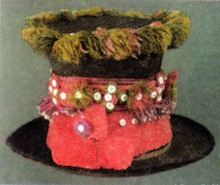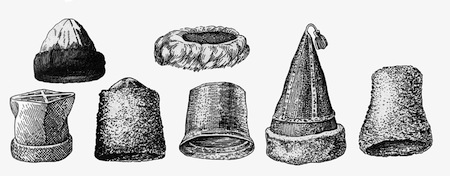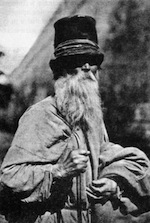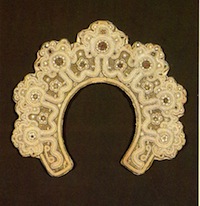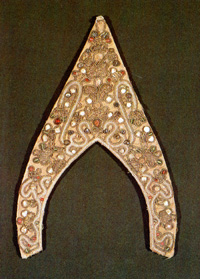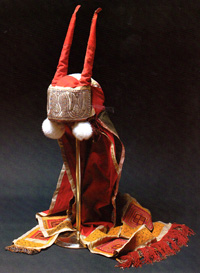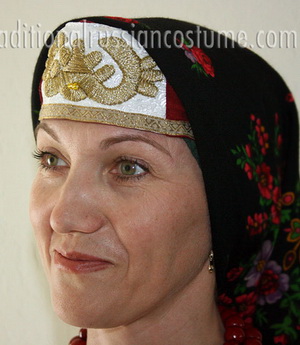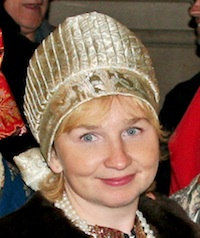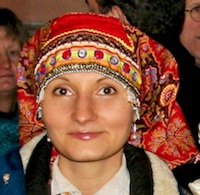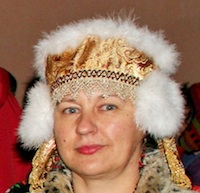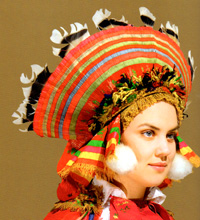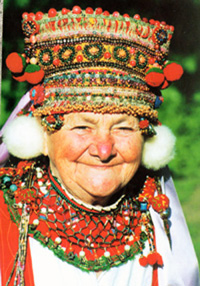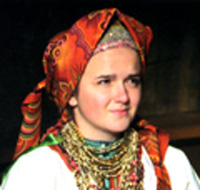
| Outfits >>> Read about… >>> Head Dress. | |||||||||||||||||||||||||||||||||
|
Russian peasants considered head dress as an important part of an outfit. All members of village community had to cover their heads (and, for women - hairs) completely when they went outside their homes. Bare head was a shame (for women), and an insult for other people (for men). Russian language still keeps words and proverbs connected with that tradition. As a whole, headpiece was kind of passport for village people. It reflected age group of a wearer (to be more precise - her/his ability to have offspring), her/his marital status, number of children, etc. According to ethnographers, usage of a headdress (or, of a hairdo) as a marker of physical maturity was common for all traditional cultures around the world. And, Russia was not an exception. Head covers of Russian peasants expressed any changes of wearer's health and/or family situation very precisely and carefully. Therefore, people could switch from one hat to another every year (or, even more frequent, e.g., during adolescence). Being a marker of maturity, headdresses were forbidden for "mladency" (children before their age of 8). At his 8th birthday, boys got their first hats (along with the first porty - pants). Girls of the same age started to wear modest kerchiefs and earrings. However, later, between ages of 11 and 15, headpieces became bright and fancy. New details reflecting process of maturation had been added to them almost each month.
Tradition didn't require any particular shape of color. The only rule was: the fancier, the better. When a boy found a girlfriend (not a bride yet), he started to decorate his headdress with small gifts made by her: tassels, bows, etc. After engagement, a groom-to-be beautified his headpiece with wide silken bands, paper flowers, beads, and pearls - depended on his family's wealth. And, for wedding ceremony, embroidered plat (a ritual towel) carried symbols of fertility and prosperity had to be tied around groom's hat.
Men's headpieces were very diverse in fashion, decoration, and fabric used. All those differences caused different names of hats.
In contrast to men's hats, which were pretty similar around Russia, women's headdresses of each region were totally different in their shape, color, decoration, and name. For instance, headpiece shown on a photo had been worn in Archangel region only. And, its true name was not "kokoshnik", but venec ("a diadem").
In general, girls' high crown-like headpieces on a birch-bark base, embellished with golden embroidery, beads, and semiprecious gemstones, existed in Northern Russia only. Young peasant women of Southern regions wore wreaths, headbands made of expensive fabrics, or simply kerchiefs.
Embroidery ornamented a girl's headdress had to depict Tree of Life. It was an allusion to a future motherhood of a wearer. And, from peasants' point of view, that was also a magical guarantee for a proper and well-timed maturation of a girl. Engaged girls should add swans of geese to their headpiece designs (in accordance to Russian paganism, swan symbolized love, marriage, and wife). The main difference between girls' and married women's headdresses was that girls' ones allowed seeing hair and vertex of a wearer. Contrary, wives must cover their braids completely. The reason for that requirement lied in archaic beliefs that hair was a source of magic power. Therefore, covered hairdo of a wife (and, ritual cutting of a bride's hair during wedding ceremony) symbolized her submission to a husband. Design and ornamentation of married women's headpiece expressed and honored their motherhood. That idea could be shown in two ways. A headdress could carry high (up to 2 feet) bright-cololred horns (as an allusion to a second nature of Mothers of the World: female elk). Or, a symbol of Delivering Mother (so-called "a pretty frog") should be embroidered with golden thread.
Words used for naming of women's headdresses often reflected a type of textile, or a fashion of a headpiece: "borushka" - one with folds, povoinik - encircling one, barkhotka - made of velvet. However, the most ancient terms expressed an archaic idea that being mother was symbolically equal being a bird: kokoshnik (kokosh means "a hen" in ancient-Slavic), soroka ("a magpie" in Russian), ptakha ("a bird").
After their 40s, women lost their right to wear "horns of motherhood". Also, a "froggy" became more modest. Instead of golden fiber, "seniors-to-be" had to use woolen thread. And, after a menopause, "grandmothers" wore just plain black or white kerchiefs.
| |||||||||||||||||||||||||||||||||
Sources (in Russian)
|
